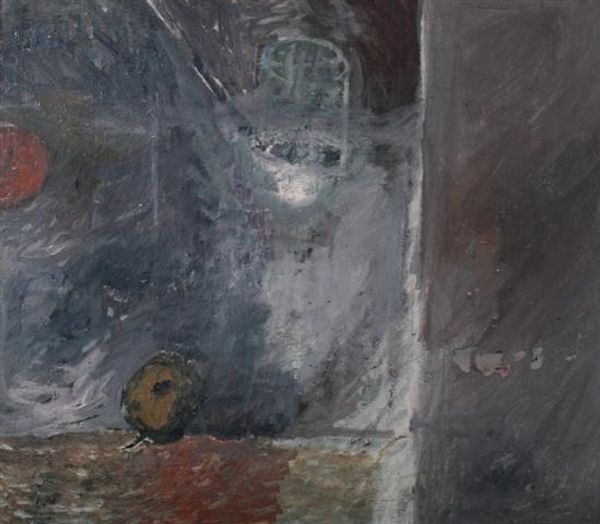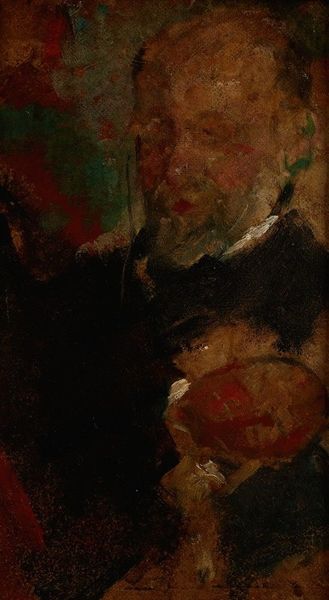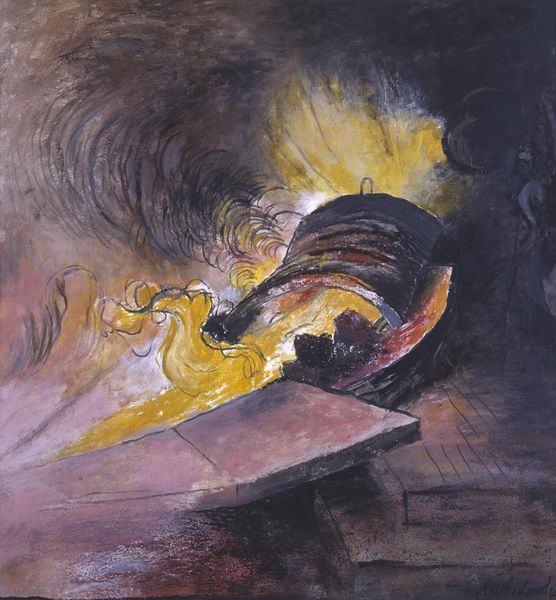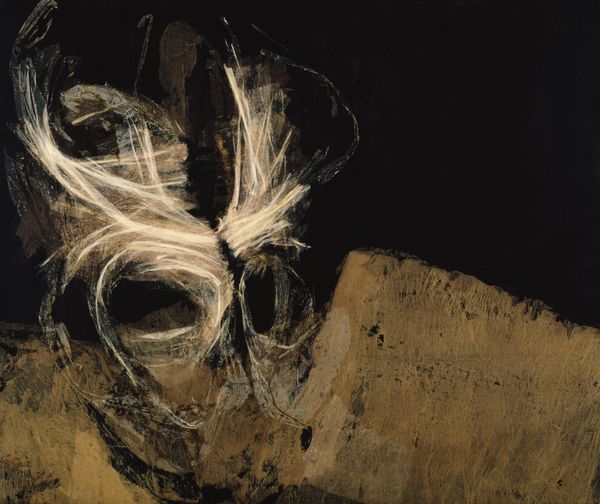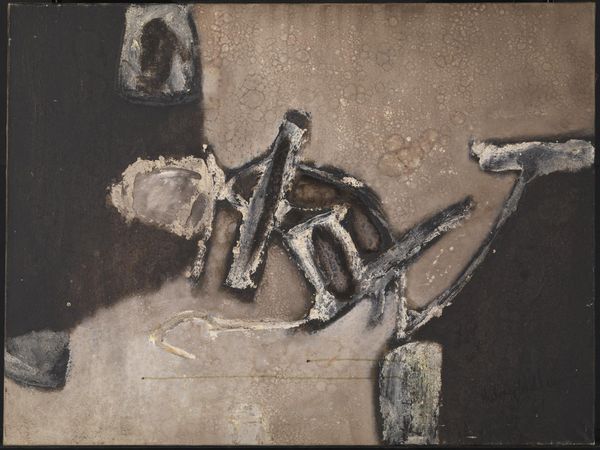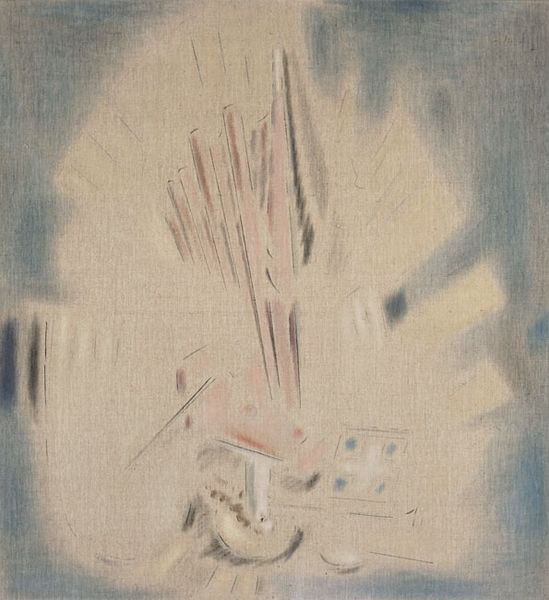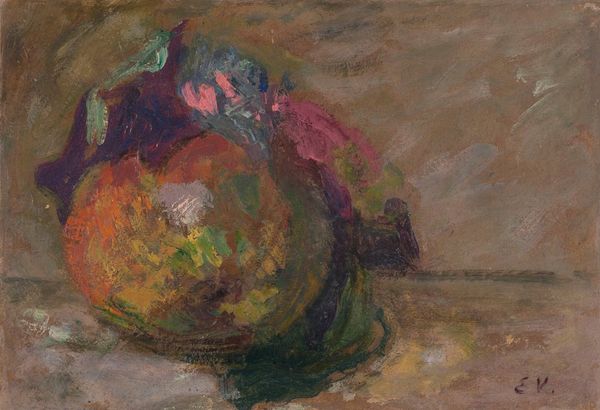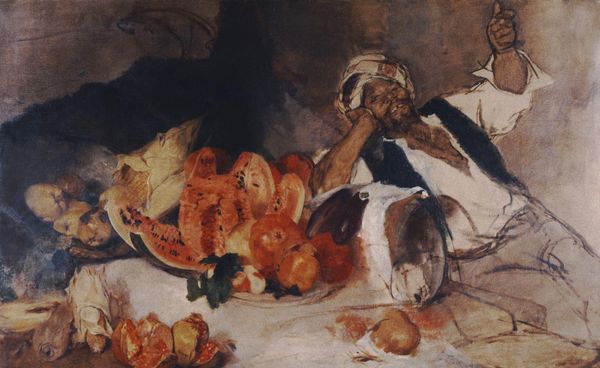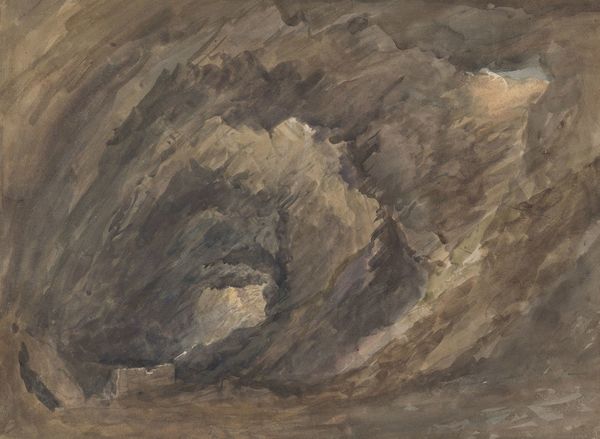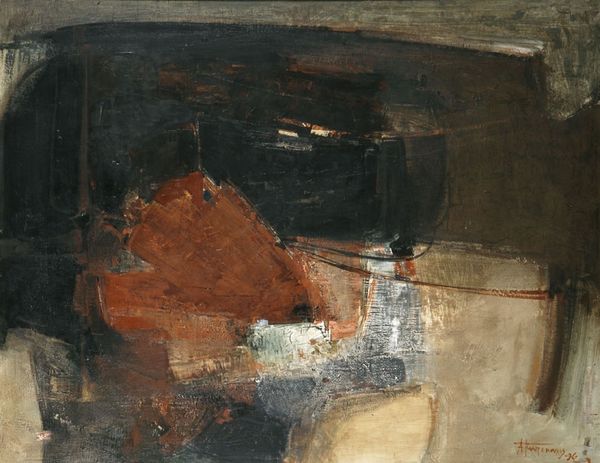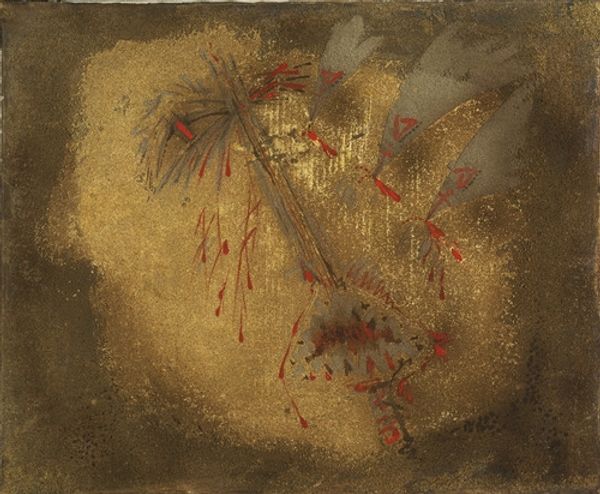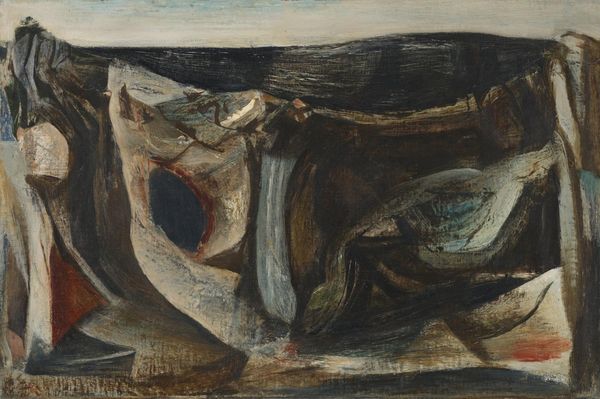
Copyright: František Hudeček,Fair Use
Editor: Here we have František Hudeček's 1934 oil painting, "Sleeping Head." It's rather intriguing. The form seems almost organic, maybe even a little unsettling. What do you see in this piece? Curator: I'm immediately struck by the biomorphic shapes and their emotional resonance. It's from 1934, right? Consider the unease in Europe then, the rise of fascism. This 'Sleeping Head' isn't just resting; it might be indicative of a culture in denial, turning a blind eye. Editor: That's a compelling idea, especially linking it to the historical context. I was focused more on the internal elements, like how the lines create a sense of depth. Curator: Yes, look at the layers, the spiraling forms—do they perhaps echo the subconscious, a descent into the psyche? That small dark shape at the bottom; is it a seed? Or a shadow of what is to come? The symbolism seems potent and open to multiple interpretations, as good surrealist art tends to be. What emotional reaction do you have? Editor: I still find it slightly disturbing. It feels closed-off but also vulnerable somehow. Curator: Vulnerability is a key component. Notice the contrast between the rough exterior and the fragile, almost skeletal structure at the top. This work exists in that liminal space, that constant human negotiation between what we reveal to the outside world, and what secrets and trauma remain internal. The image invites deep contemplation of our humanity, doesn’t it? Editor: It really does. I initially just saw abstract shapes, but now I'm considering its deeper connection to culture and emotional symbolism. Curator: Exactly, it makes us think of the history, the cultural implications of Hudeček's artistic rendering of his experience.
Comments
No comments
Be the first to comment and join the conversation on the ultimate creative platform.

